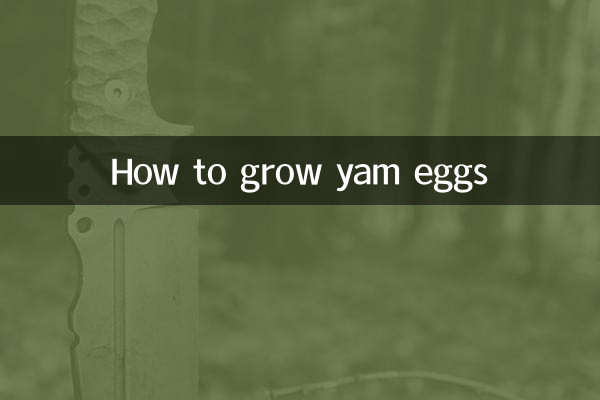How to grow yam eggs
Yam eggs, also known as potatoes, are a nutritious and adaptable crop that have been favored by more and more home growers in recent years. This article will introduce in detail the cultivation method of yam eggs, and provide you with a comprehensive cultivation guide based on the hot topics and hot content on the Internet in the past 10 days.
1. Preparation before planting

1.Select variety: Choose suitable varieties according to local climate and soil conditions. Common varieties include early maturing, medium maturing and late maturing.
| Variety type | growth cycle | Suitable area |
|---|---|---|
| Early maturing varieties | 70-90 days | cold northern regions |
| medium ripe variety | 90-120 days | most areas |
| Late maturing varieties | 120-150 days | warm southern region |
2.soil preparation: Yam eggs prefer loose, well-drained soil with an optimal pH value between 5.5-6.5. Before planting, the soil needs to be plowed deeply and sufficient base fertilizer applied.
3.seed treatment: Choose healthy and disease-free seed potatoes. When cutting into pieces, each piece should have at least 1-2 bud eyes. After cutting, treat the incision with plant ash or fungicide.
2. Planting steps
1.Sowing time: Generally sowing in spring when the soil temperature is stable at 7-10℃. Sowing times vary slightly in different regions.
| area | Sowing time |
|---|---|
| Northeastern region | Late April to early May |
| North China | Late March to early April |
| southern region | Late February to early March |
2.Sowing method: Drill sowing or hole sowing can be used, with row spacing of 60-70 cm, plant spacing of 20-25 cm, and sowing depth of 10-15 cm.
3.Field management:
-watering: Keep the soil moist but avoid standing water.
-fertilize: Topdress 2-3 times during the growth period, mainly potassium fertilizer.
-Build soil: Carry out soiling for the first time when the plant grows to 15-20 cm, and then soil it 1-2 times later depending on the situation.
3. Pest and disease control
1.Common diseases: Late blight, early blight, scab, etc.
2.Common pests: Aphids, potato beetles, etc.
3.Prevention and control methods:
- Choose disease-resistant varieties
- Crop rotation
- Use pesticides rationally
| Name of pests and diseases | Prevention and control methods | Recommended medicine |
|---|---|---|
| late blight | Remove diseased plants promptly and spray pesticides for prevention and control | Mancozeb, cymoxanil |
| aphids | Physical control + chemical control | Imidacloprid, acetamiprid |
4. Harvest and Storage
1.harvest time: It can be harvested when the above-ground part of the plant turns yellow.
2.Harvesting method: Choose a sunny day and dig carefully to avoid damaging the potato pieces.
3.Storage conditions:
| Storage method | temperature | Humidity | storage time |
|---|---|---|---|
| cellar storage | 4-8℃ | 85-90% | 4-6 months |
| indoor storage | 10-15℃ | 80-85% | 2-3 months |
5. Hot planting topics in the past 10 days
1.organic cultivation: More and more growers are paying attention to organic growing methods without pesticides and chemical fertilizers.
2.Home cultivation: Planting yam eggs on balconies or small yards has become a new hobby for urbanites.
3.new varieties: Some new varieties with strong disease resistance and high yield have received widespread attention.
4.Smart planting: Using IoT technology to monitor soil temperature and humidity has become a new trend.
6. Planting tips
1. Before planting, seed potatoes can be placed in a warm place to accelerate germination, which can increase the seedling emergence rate.
2. Avoid continuous cropping with solanaceous crops to reduce the occurrence of diseases.
3. Stop watering one week before harvest to help extend storage time.
4. Dry the potato pieces before storage, and remove diseased and damaged potatoes.
Through the above detailed planting guide, I believe you have mastered the essentials of growing yam eggs. As long as you manage according to scientific methods, you will be able to enjoy the joy of harvest.

check the details

check the details